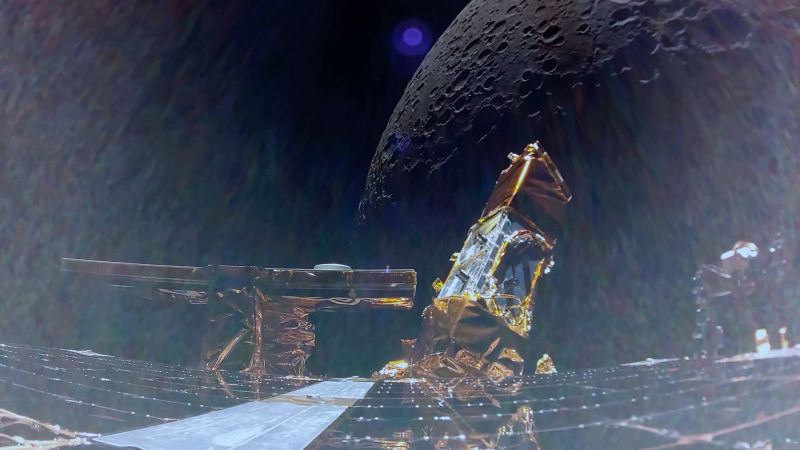The advancement in lunar exploration has taken a significant leap forward with the remarkable journey of the Blue Ghost lunar lander. Successfully entering the moon’s orbit on February 13, it has since been providing incredible imagery that reveals the hidden aspects of our celestial neighbor. This Texas-based spacecraft, engineered by Firefly Aerospace, has not only entered lunar orbit but has also transitioned from a high elliptical orbit to a lower one, approximately 120 kilometers (74.6 miles) above the moon’s surface. This milestone has allowed for the capture of stunning visuals, particularly focusing on the far side of the moon, which remains unseen from Earth.
The recent footage released includes captivating close-ups of the moon’s rocky terrain, which displays numerous impact craters and highlights the lunar south pole—an area of immense interest for scientific research. Joseph Marlin, the deputy chief engineer for Blue Ghost, remarked on the surreal experience of seeing these original images captured by their own spacecraft. He expressed the inspiration that comes from witnessing the results of extensive hard work, noting how it validates the mission’s goals and efforts.
After departing Earth’s orbit on February 8, Blue Ghost embarked on a multi-day voyage to reach the moon, traveling approximately 238,855 miles (384,400 kilometers), the average distance between Earth and its lunar satellite. Currently, the lander is about halfway through its planned 16-day orbit of the moon, with a designated landing attempt scheduled for March 2. This ambitious mission carries with it 10 NASA science and technology instruments intended for use under the agency’s Commercial Lunar Payload Services (CLPS) initiative.
The CLPS initiative, which is part of NASA’s broader Artemis program, aims to return astronauts to the moon over 50 years after the historic Apollo missions. Following the Blue Ghost’s landing, these instruments will be employed to conduct scientific inquiries primarily about the moon’s subsurface environment, focusing on lunar regolith—composed of loose rocks and mineral fragments—which holds vital information about the moon’s history and formation.
Furthermore, the significance of robotic missions like that of Blue Ghost lies in their experimental capabilities. These missions are designed to conduct scientific studies, test technologies, and lay the groundwork for future human exploration both on the moon and beyond, including crewed missions to Mars. NASA’s Artemis program has emphasized that the insights gathered from such missions are crucial to the successful execution of upcoming astronaut missions.
Blue Ghost is set to land on the far eastern edge of the moon’s near side, near Mons Latreille—an ancient volcanic feature in the Mare Crisium, a vast basin spanning over 300 miles (483 kilometers). After landing, it will carry out surface operations for an entire lunar day, which equates to approximately 14 Earth days. Following this period, the lander is expected to go dormant due to the harsh conditions of lunar nighttime, where temperatures plummet and darkness prevails.
The anticipation surrounding the data collection post-landing is palpable among the engineering team. Marlin highlights an exciting aspect of the mission where Blue Ghost is expected to capture a solar eclipse on March 14. This phenomenon, where Earth obstructs the sun from the viewpoint of the moon, will cast Blue Ghost into shadow for a duration of nearly five hours.
Moreover, shortly after the solar eclipse event, the team plans to document a lunar sunset on March 16, with hopes of validating the intriguing dust levitation phenomenon—a captivating effect observed by the last Apollo astronaut. This collection of data and imagery promises to offer unprecedented insights into the moon’s environment and support future exploration endeavors in our solar system. The Blue Ghost mission exemplifies the continuous evolution and exploration of humanity’s reach into the cosmos, pushing the boundaries of science and technology to uncover more about our fascinating universe.



